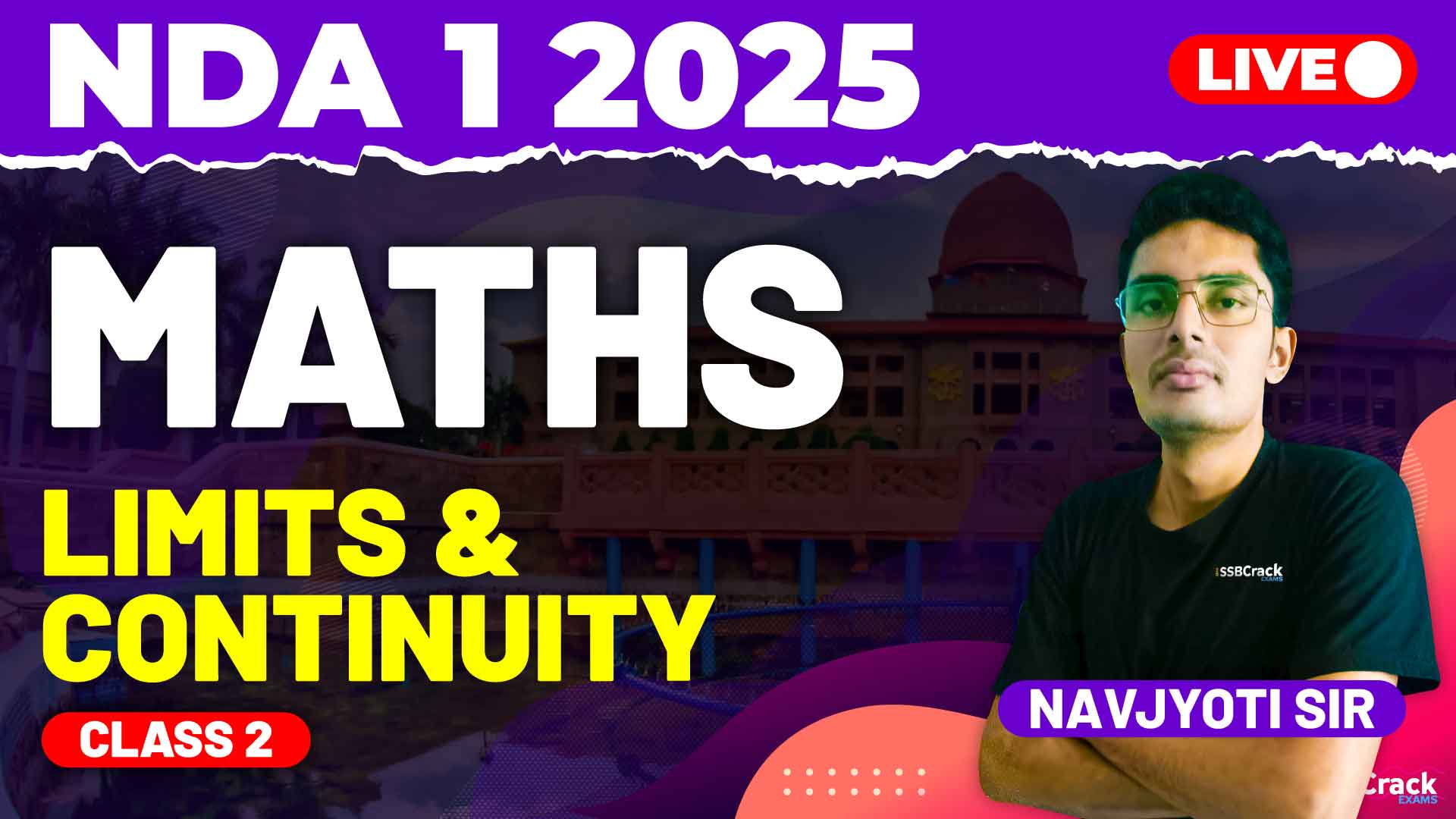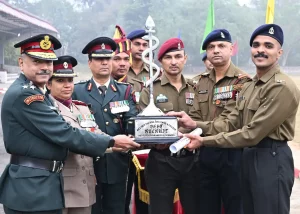A recent session on Limit and Continuity was conducted to help students preparing for the National Defence Academy and Naval Academy (NDA-NA) Exam – Paper I – Maths. This essential topic forms the foundation for higher mathematics, making its mastery indispensable. The class delved into key sub-topics, including special results for solving expressions of the form 1∞ , the concept of continuity, and identifying continuous functions. The interactive nature of the session ensured that students not only understood the theory but also practiced its application effectively.
Key Highlights of the Class
1. Special Results for Solving 1∞
The session began with an explanation of limits involving indeterminate forms, with a special focus on 1∞. This often-overlooked case was broken down into manageable steps, making it simpler for students to grasp. Practical examples demonstrated how to handle such expressions systematically.
2. Introduction to Continuity
The concept of continuity was introduced by linking it to the behavior of real-life scenarios. A function was described as continuous if its graph could be drawn without lifting the pen. Students learned how to analyze continuity at a point by examining limits and function values.
3. Continuous Functions
A detailed discussion on different types of continuous functions followed, with an emphasis on their real-world significance. The class also explored the practical applications of continuity in physics and engineering, creating a broader perspective for students.
4. Visualizing Continuity
Graphical representations were used to illustrate continuous and discontinuous functions. This helped students visualize concepts better and strengthened their ability to solve problems involving piecewise functions.
Strategies for Preparing Limit and Continuity for NDA-NA Exam
1. Understand the Basics
Ensure you understand what limits and continuity mean. Visualize these concepts using graphs, as this will aid in solving related problems intuitively.
2. Memorize Special Results
Certain results for solving 1∞1^\infty and other indeterminate forms are critical. Make a list of these results, review them regularly, and practice applying them in problems.
3. Study the Behavior of Functions
Learn how different types of functions (linear, quadratic, trigonometric, etc.) behave. This knowledge is crucial for determining continuity and solving limit problems quickly.
4. Practice Real-Life Applications
Relating abstract concepts like continuity to real-life situations can make them easier to understand. For example, think about the continuity of motion in physics to understand continuous functions.
5. Solve a Variety of Problems
Practice solving problems that require both direct application of results and those that need deeper conceptual understanding. Previous years’ NDA-NA questions are a must for understanding the exam pattern.
6. Revise Graphs
Focus on the graphical representation of functions to understand their continuity visually. This approach can often simplify seemingly complex problems.
7. Mock Tests and Time Management
Attempt mock tests regularly to assess your understanding and improve your speed. Practice managing your time effectively, as this is crucial in the actual exam.
Conclusion
The class on Limit and Continuity was a comprehensive session aimed at building conceptual clarity and problem-solving ability. With a balanced approach of theory and application, students were equipped to handle questions confidently in the NDA-NA exam.
Preparation for this topic demands consistent practice, a clear understanding of core principles, and familiarity with the exam pattern. With the right strategies and a focused mindset, mastering Limit and Continuity is well within reach for any aspirant.



















